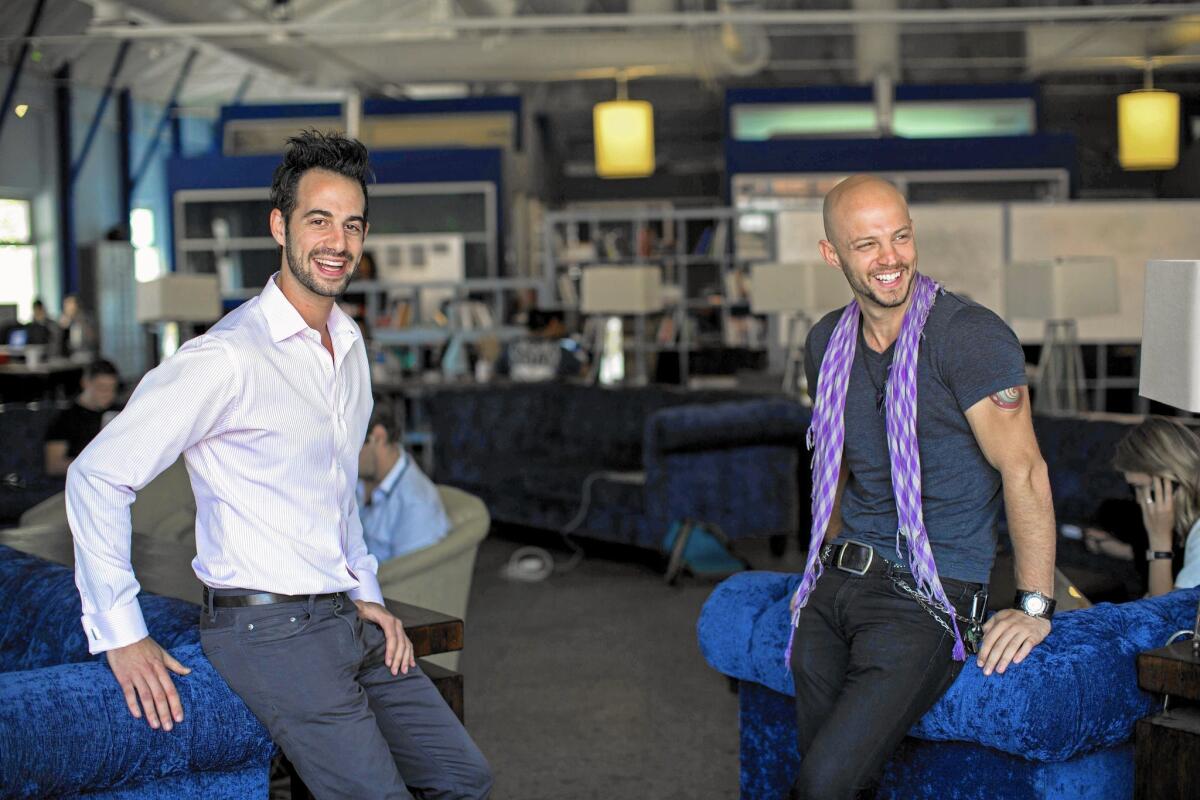Cutting Edge: RideAmigos app helps institutions manage their carpooling programs

- Share via
Fed up with long commutes in New York City, Jeffrey Chernick ditched his Wall Street job to see if technology could offer a solution. He came up with RideAmigos, now based in Venice, which creates ride-matching software to revive the decades-old idea of carpooling.
“Eliminating traffic, that’s our dream,” Chernick said.
------------
FOR THE RECORD:
Carpooling apps: In the Dec. 13 Business section, an article about carpooling apps said that RideWith had launched in Tel Aviv, which was described as Israel’s capital. The capital is Jerusalem, though the United States and most other nations do not recognize it as such and maintain their embassies in Tel Aviv.
------------
Unlike apps that connect random individuals for last-minute rides, RideAmigos is a software program that aims to help big institutions manage their carpooling programs.
Licensing its software to businesses, schools and cities, RideAmigos targets networks of people who go to the same place every day and could share rides. The appeal to employers is clear: Talented workers who live far away have more incentive to work for a company. Employees who aren’t driving can do some work in the car. Valuable parking lot real estate can be cut, and employers can claim they’re doing their part to save planet Earth.
Clients include corporate campuses on L.A.’s Westside, including Playa Vista and the Howard Hughes Center. Santa Monica College uses RideAmigos and MIT is slated to join soon.
RideAmigos sees itself at the forefront of a dramatic shift in Americans’ relationship with automobiles.
“We’re entering into a new era of mobility,” said Susan Shaheen, director of Innovative Mobility Research at UC Berkeley.
In large part, the shift is generational. Baby boomers grew up in love with cars. Gas was cheap, and wide-open highways weren’t just a metaphor.
Smog and toxic substances were a real problem in big cities but they weren’t threatening to turn the world crispy. Catalytic converters and no-lead gas provided a reasonable fix.
Now, highways are clogged everywhere, the climate’s in trouble, and millennials tend to see cars as basic transportation, not objects of affection.
So alternative transport is on the rise. There’s Uber and Lyft for ride-hailing, Zipcar and Getaround for last-minute short-term car rentals. Electric bicycles and hoverboards. And carpooling apps like RideAmigos.
When carpoolers punch addresses into the RideAmigos platform on computers and phones, they see commuter routes of peers. A messaging system enables carpool coordination. Companies can add rewards such as gift cards and electric bikes as incentives.
The software also lets carpoolers scope out walking, biking and public transportation as alternatives.
RideAmigos was born in 2007 when Chernick quit his cash management job at Lehman Bros. Frustrated by an hourlong Manhattan subway commute, Chernick hit on taxi sharing as a fast, cost-efficient way to get around the city. But the financial meltdown and taxi industry resistance put the brakes on his plans for a taxi sharing website.
“We worked with taxis to change their model, but nobody wanted to play ball,” Chernick said.
Around that time, Chernick, a drummer in an electro-pop band called Story of the Running Wolf, had a personal transformation. He moved to Venice, began meditating regularly and embraced a laid-back philosophy he calls “flow state.”
In tweaking the RideAmigos model, he programmed several transportation options into one trip planner platform. When he noticed Century City looking for carpooling software, he persuaded officials to try his “multi-modal trip planner” instead.
Sustainability Project Manager Ferris Kawar at Santa Monica College said the campus provides 4,000 parking spaces for 30,000 students, so carpooling is essential. The college turned to RideAmigos in part because it offered bus routes, train routes and walking paths along with carpooling.
“People are so time constrained, they can’t afford to use one system to carpool and another to catch the bus,” Kawar said. “They want it all in one place.”
RideAmigos plans to release a GPS app that would let commuters track their trip routes. But Chernick has no plans for a real-time carpool app, saying that matching people with rides at a moment’s notice is too difficult.
Other companies, however, are banking on real-time appeal. With an app called Carma, users can find rides within 15 minutes — if they’re in cities with vast user bases such as Seattle, San Francisco, Santa Barbara and Austin.
Carma keeps 15% of the trip fee, which costs $1 for the first mile, 20 cents per mile for the next 15. People usually carpool with friends, neighbors and colleagues.
Another company, Zimride, began as an open-access carpooling website from Lyft creators Logan Green and John Zimmer. But after Enterprise Rent-A-Car bought it in 2013, the program switched to serve closed networks at universities and corporations, including USC, Facebook and Southern California Edison. With rates based on mileage, a trip from downtown L.A. to Burbank could cost a couple of bucks, and a drive to the Bay Area costs between $40 and $60.
But the highest-profile carpool service is RideWith. The app, created by the Google-owned Waze team, launched as a pilot last July in Tel Aviv, Israel. The app collects a 15% fee after setting a price based on gas costs. Waze won’t disclose how many people have signed up, saying that it is still rolling out the service.
Uber and Lyft carpooling options, designed for spontaneous matching with hired drivers, are different animals. For both UberPool and Lyft Line, after one person hitches a ride, others can join in and split the cost.
But all these options still face the challenge of getting enough drivers and passengers on board. Chernick is convinced that technology can be the solution.
“It’s more possible than ever to create behavior change,” he said, “because the options are there.”






